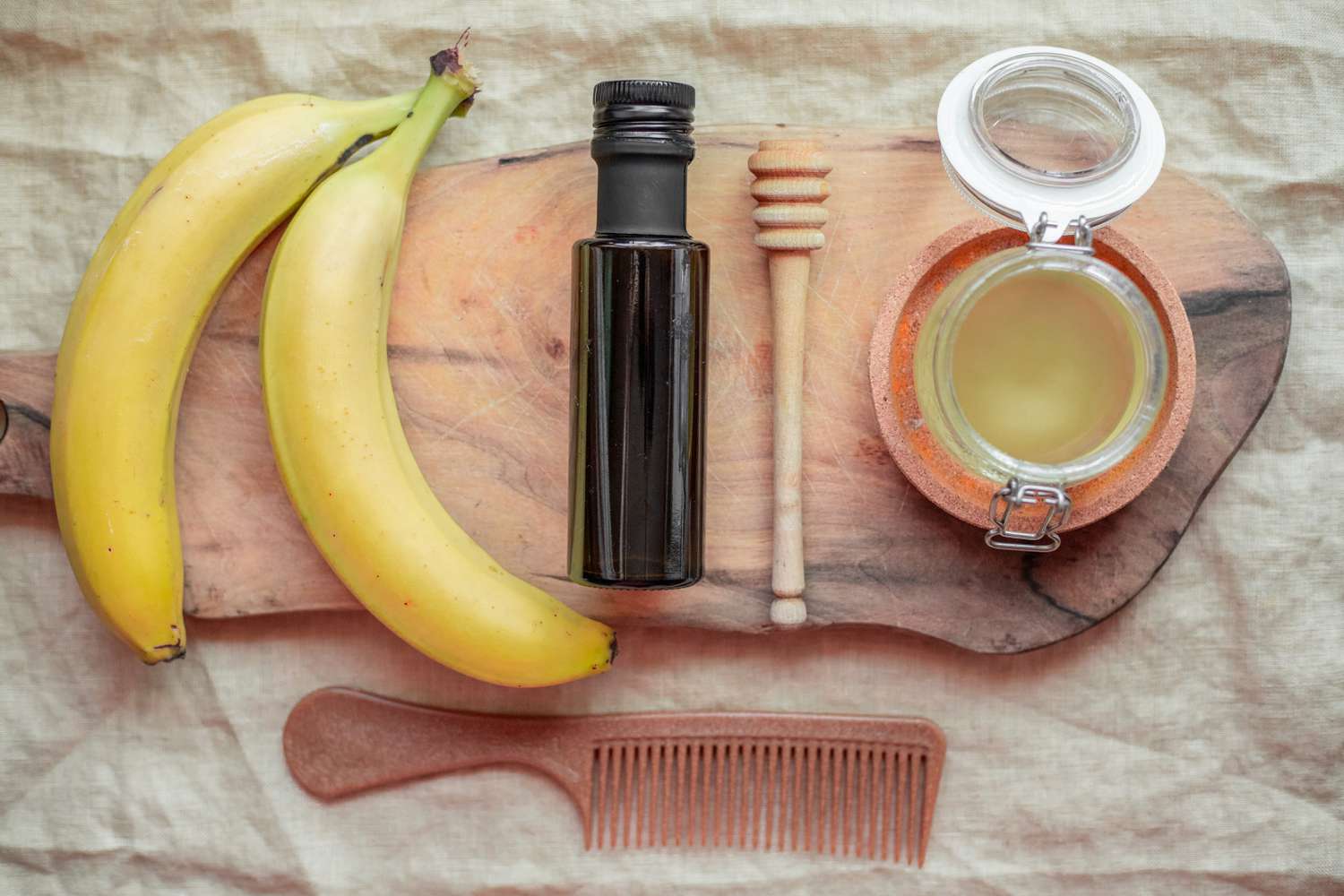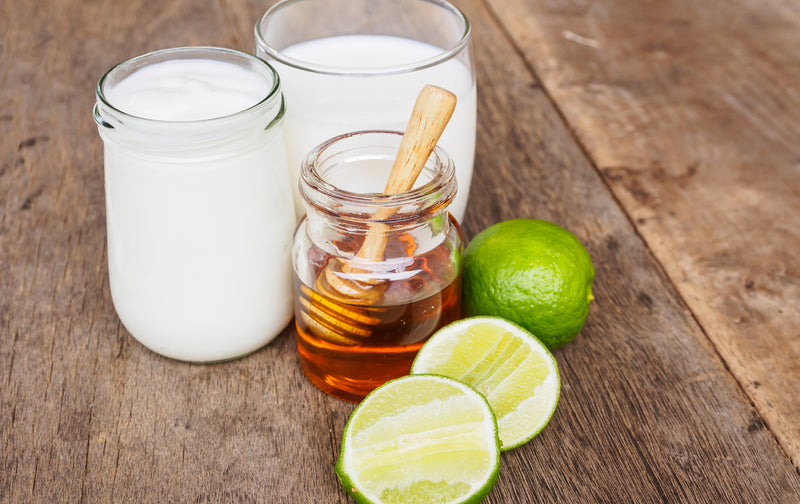Hair
Titanium Flat Iron vs. Ceramic
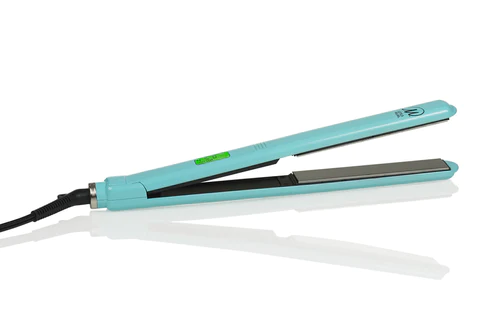
Titanium hair iron vs ceramic: We take hair straightening seriously here at Beautisenz. When it comes to hair straighteners, there are different plate materials available and each has different purposes to suit different needs. Careful consideration should be made when choosing between the different flat iron types; the most important being your hair type. In this article, we will look at titanium vs. ceramic plate material types so that you can better understand the differences and similarities between the two. Scroll down for more information.
What is a Ceramic Flat Iron?
Ceramic straighteners offer excellent value for money. Some of the desired benefits of a ceramic straightener are:
- Smooth glide – they will not tug or pull at hair.
- Quick even heat – they heat up very quickly and evenly so you will not have to make many passes through the hair.
There are also tourmaline-infused ceramic irons on the market. Together they make for a very desirable straightener giving you incredibly shiny locks. Tourmaline is a semi-precious stone that comes in all different colors. The benefits tourmaline brings to a ceramic iron are:
- Generates a larger amount of negative ions that lock moisture into hair, reducing static and frizz.
- Generates infrared heat that penetrates the hair from the inside out making hair smooth and shiny without damage.
- Heats up quickly like ceramic.
Pros & Cons of Ceramic Plates
- Affordable
- Heats up quickly and evenly.
- Glides smoothly over the hair without snagging.
- Great for beginners and those with all hair types.
- Some irons are labeled as ceramic but are merely ceramic coated over aluminum plates and do not retain heat as well. Look for solid ceramic.
- Ceramic is not as durable as titanium. The plates can chip over time due to the brittle nature of ceramics.
What is a Titanium Straightener?
Titanium plates also use infrared heat and negative ion technology to smooth hair and enhance shine.
Pros & Cons of Titanium Plates
- Very durable and scratch-resistant, lasting longer than ceramic plates.
- Reaches high temperatures to straighten stubborn hair.
- Fewer passes need to be made = less exposure to heat.
- Will likely cause damage at it’s high temperatures to thin, fragile hair.
- The more expensive option.
Things to Consider When Making a Choice Between Ceramic vs Titanium Plates
Cost
Ceramic hair straighteners are very common and come in a wide price range. They offer great value for money and are usually cheaper than titanium irons. Keep in mind that the cheaper ceramic irons may not perform as well as the more expensive ones.
Hair Type
Hair type is the most important factor that comes in to play when choosing a straightener. Here are the differences between ceramic and titanium when it comes to hair type:
Ceramic – Good for all hair types from thin to thick hair. Will not work as well on hair that is very thick and stubborn or very curly.
Titanium – Should not be used on thin fragile hair. Great for hair that is thick, coarse and/or curly.
Although ceramic plates heat up pretty quickly, titanium plates will get the job done quicker due to their ability to quickly heat up, retain heat, and allow for fewer passes through the hair.
Experience
If you are a beginner it is best to stick to ceramic hair straighteners until you get the hang of it and discover how your hair reacts to straightening/what temperature your hair straightens best at without causing damage. If you are experienced and know what you’re getting into with straightening hair, the titanium straightener is an excellent choice. Titanium plated hair straighteners are often used by professionals.
The Bottom Line
Ceramic plates provide quick and even heating and are great for all hair types, unless of course, your hair is very stubborn and/or very curly. For a beginner, this is a great place to start. Titanium plates heat up to very high temperatures quickly and evenly. They may cause hair damage that is fine and fragile and are best for professional or experienced users. When it comes down to a titanium hair straightener vs. ceramic, make the choice that is best for your hair type and skill level!
Hair
Best DIY Hair Masks for Damaged Hair
Hair
7 Incredible Ways Coconut Oil Benefits Your Hair
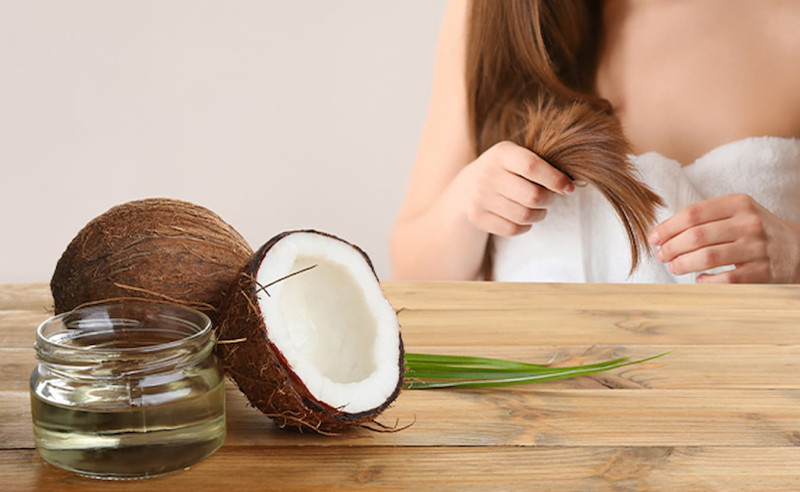
Coconut oil for tangled hair: Let’s play a game: what natural product is not only hailed as a superfood for health benefits but also the answer to nearly all beauty topics? You guessed it–coconut oil! Coconut oil is the queen of all oils, and can seemingly do no wrong. Not only is the oil great for cooking, but it is the answer to many problems such as dry and irritated skin, stubborn eye makeup, damaged cuticles, and our very favorite: hair care!
I have personally had issues with a dry scalp which has seemingly been a recurring problem even with using traditional treatment. However, coconut oil has made a drastic difference for me since I started using it. Because of my success with using it, I wanted to share my enthusiasm with you, and hopefully, you’ll have a great story to tell as well. In this article, we’ll be discussing the variety of benefits of coconut oil on hair, giving thoughts on if coconut oil is bad for your hair, and more!
First off, let’s address whether coconut oil is bad for your hair. The answer is simple: no, it most certainly isn’t. Coconut oil can help boost the health of your hair, provide it with nourishment to heal damage, and moisturize your scalp as well. Coconut oil is completely natural and rich in fatty acids, proteins, vitamins, and minerals. Applying coconut oil to your hair is comparable to giving your face a nourishing spa treatment. It’s safe, and it’s effective!
When you are browsing store aisles for coconut oil, don’t let marketing catch you off-guard. There is no particular “kind” of coconut oil that is better for your skin, hair, and nails as opposed to what you’ll see advertised in the beauty or health aisles. As long as it is pure, 100% coconut oil, you’ll be good to go. Take a look around the food aisles instead, where you’ll likely find a large jar of coconut oil for far cheaper than in the beauty or health aisles. This will work just as well, considering the only difference is marketing and price.
Our suggestion would be to veer toward organic coconut oil so your skin and hair aren’t exposed to any of those damaging chemicals. My favorite coconut oil is the Spectrum organic and refined oil, simply because not only does it come in quite a large quantity, but as it is refined, it doesn’t smell or taste like coconut, which is great if you’ll be using it in various recipes as well–after all, a little goes a long way, so a container is bound to last a while.
How often should you put coconut oil in your hair?
You may be wondering if you can put coconut oil in your hair every day, and we’re happy to say that it can be applied as often as daily without any harm. Of course, it is an oil, so there is always the chance of it blocking your pores, which may cause the formation of acne. Because of this, daily use should be light while heavier uses should be followed with a shampoo treatment. It is quite a popular preference to use coconut oil as a hair mask at least once a month if not once a week.
To use coconut oil as a weekly or monthly hair mask, simply take about penny-sized amounts of oil, carefully rub it between your fingers to liquefy, and work it into your hair. Begin at your roots, being sure to massage your scalp as you go. Once your roots and scalp are covered, work the coconut oil down your hair strands, paying close attention to your dry ends. For daily use, you’ll want to use a much smaller amount to prevent your hair from feeling too oily.
The Benefits
Due to its popularity in beauty, you must be guessing by now that there are numerous benefits of coconut oil for hair treatment. The pros of applying coconut oil to your strands go much further than adding shine (though, who couldn’t use a little extra glow?), and extend to the health of your hair follicles themselves. The seemingly simple task of working coconut oil through your hair, tying it up in a bun, and covering it overnight with a disposable cap boosts your hair’s strength and resilience far more than you probably realize. Let’s take a look at these benefits.
1. Damaged Hair Nourishment
Split ends have to be the bane of all of us attempting to grow our hair long. It seems like every time we turn around, we have to trim our hair again. Though we know this will eventually help nourish our hair more and produce greater length, the waiting game is a difficult one. Thankfully, that’s where coconut oil comes in. Coconut oil is enriched with vitamins, fatty acids, and protein–all of which are necessary for helping your hair’s growth. When you apply coconut oil to your hair, the oil penetrates your hair shaft down to the follicle, coating it with the fatty acids and protein it needs to repair any previous damage.
As the coconut oil helps with split ends, in time, hair growth is typically a visible result. Your trips to the hair stylist can be a little farther apart now that your split ends won’t be as much of an issue. Without the split ends, your hair strands will retain their length so you can see the hair growth! The hair growth factor is twofold, because coconut oil nourishes your roots as well, which will now have the nutrients they need to heal any damage, target weak areas, and put more focus into growing rather than reviving dead ends. Though coconut oil for hair loss has been speculated as effective, there aren’t any studies proving it. Of course, since it can help with hair growth, it doesn’t hurt to try.
TIP:
To help your damaged hair, simply apply coconut oil as a hair mask before bed, ensuring your strands are covered as well as your massaged scalp. Cover with a hair cap and wash with shampoo in the morning. As always, follow the shampoo with a high-quality conditioner to lock in the moisture provided overnight by the oil.
2. Dandruff Treatment
Dandruff isn’t necessarily considered hair damage, but rather simply an affliction that many people experience. If you have ever had or perhaps even currently struggle with dandruff, then you know it can be a real issue. Not only does everyone who happens to see it or hear about it make assumptions about your hygiene, but it feels like no one understands. Meanwhile, you’re dealing with an itchy scalp and flakes on your clothing. It’s not something you can help, and despite your best efforts, dandruff shampoo, at best, tends to just keep the problem at bay.
As with all-natural treatments, using coconut oil to help your dandruff won’t exactly produce overnight results, but you should start seeing a difference in a couple of weeks.
3. Relieve Infant Cradle Cap
If coconut can work wonders with dandruff, then could it help with your baby’s cradle cap? According to bellybelly.com.au, the answer is a resounding yes! Though many natural substances still require caution when being applied to infants, coconut oil is generally deemed safe. To be sure, check with your physician before use. Though there haven’t been complete studies to attest to the safety of coconut oil when used on infants and toddlers, it also doesn’t seem like there have been any recorded adverse issues either. Therefore, if you do feel comfortable with giving coconut oil to your infant, there are many potential benefits. One of the major ways coconut oil can help your baby is by relieving their cradle cap. With coconut oil’s richly hydrating properties, it can be effective at treating cradle caps and preventing them from recurring.
TIP
To use it for a cradle cap, rub a dab of coconut oil into your baby’s scalp, gently massage it, and leave it to sit for about twenty minutes. Once the time is up, wipe away the excess oil with a cloth and use a soft brush to comb through their hair, removing any remaining skin flakes. Repeat as needed, though hopefully with continued uses, the need for treatments will lessen.
4. Hair Conditioner
Whether you are on a coconut oil kick, forgot to pick up more conditioner, or you’d simply just like to see how it works out, this oil can be used in place of your regular conditioner! Typically, coconut oil is used as a deep or leave-in conditioner, oftentimes overnight, however, it can also be used shorter-term as well.
TIP
After shampooing as usual, start with about a nickel-sized amount of oil, and begin working it into your strands. Begin at your roots as you would with your usual conditioner and initially focus on just massaging it into your scalp. Once you’ve massaged your entire scalp, start pulling the oil through the rest of your hair, being sure to cover it all. If needed, use more oil, especially if you want to hydrate your dry ends. Leave it in for the rest of your shower, and thoroughly rinse at the end. Your hair may even be shinier than usual after this treatment!
5. Hair Detangler
Coconut oil is, after all an oil, which means it will work quite well for getting out tangles, knots, and snarls! If you’ve ever combed your hair after letting coconut oil sit as a hair mask, you’ll know there truly aren’t any tangles to struggle through. The same concept applies to using coconut oil as a hair detangler, though with a far lighter application. A small amount goes a long way, so you’ll want to be extra careful with this approach as it’s very apparent if you use too much coconut oil on dry hair. If you use too much, odds are your hair will end up weighed down and greasy.
TIP
To detangle your hair, start with a minuscule amount of oil. You can even slide a finger along the side of the jar to ensure you don’t grab too much. Rub the oil between your fingers and sparingly work it through the tangled areas. Another tip: brush from your ends to your roots to help get tangles out. Brushing from the roots down will merely aggravate them.
There is, however, a second option for detangling your hair if you are concerned about the risk of making your hair greasy by rubbing oil directly on the strands. If you have an empty spray bottle, you can dilute the coconut oil by mixing one tablespoon of oil with about a cup of water. This will easily spray on your tangled areas and greasy hair will no longer be an issue.
6. Tame Frizz
If you’re like me and deal with frizzy hair on a daily basis, then know you’re not alone. Frizzy hair is such a frustration, often ending with a basic hairstyle of a ponytail or bun because it’s otherwise unmanageable. Even at that point, however, frizzy flyaways are still an issue! Without loads of hairspray, it seems like they just can’t be tamed. Product after product on the shelves claim success with frizz, and yet, we all know most of them are a joke. Tame this frizz? Probably not happening.
This is one of the reasons why I love to use coconut oil on my hair: it truly does tame frizz and flyaways. The fatty acids in the coconut oil nourish your hair and help make each affected strand more manageable.
TIP
To unlock this benefit, shampoo and condition your hair as usual. After towel drying, comb through your hair and identify the trouble flyaway areas. With less than one-fourth of a teaspoon of coconut oil, warm it between your palms until it melts. Using your fingertips, smooth down the flyaways and the trouble frizz sections. The key here is to hardly even touch your hair; with light hands, just smooth the flyaways. Try not to touch the rest of your hair to prevent oily, weighed-down strands.
7. Scalp Massage Oil
Who could go for a scalp massage right about now? I certainly know I could, pretty much anytime, any place! Though scalp massages are the best way to usher in relaxation, this luxury often brings with it frizz and static in your hair. Don’t let that stop you though because coconut oil is a fantastic scalp massage oil. Numerous oils are on the market aimed at massages, but they are typically overpriced and underwhelming. We already know how coconut oil can help with scalp dryness, dandruff, hair damage, hair growth, and stimulates follicles, so why not use it as a massage oil? Though it solidifies at room temperature, it instantly melts at the touch, which makes it ideal for keeping down on the static during a massage.
TIP
Our suggestion for using coconut oil truly depends on your purpose. However, if you’re aiming for only a massage and not a mess of oily hair, use the coconut oil sparing. Again, try just dabbing a little from the side of the jar.
Conclusion
We hope you enjoyed this list of benefits and uses of coconut oil for your hair!
I have personally been at the point where I felt like I have tried all the products under the sun for treating my dry scalp and frizzy hair, which made coconut oil such a fantastic option for me when I heard about it. I didn’t need to look any further than my kitchen for the answer and I could save money while I was at it!
Keep in mind that each person reacts to products differently and these benefits may work for one person, but not the next. It truly has made such a difference for me, so I hope it does for you as well. If you found this article helpful, please feel free to share it with your friends!
Hair
How to Curl Your Hair with a Flat Iron for Beginners
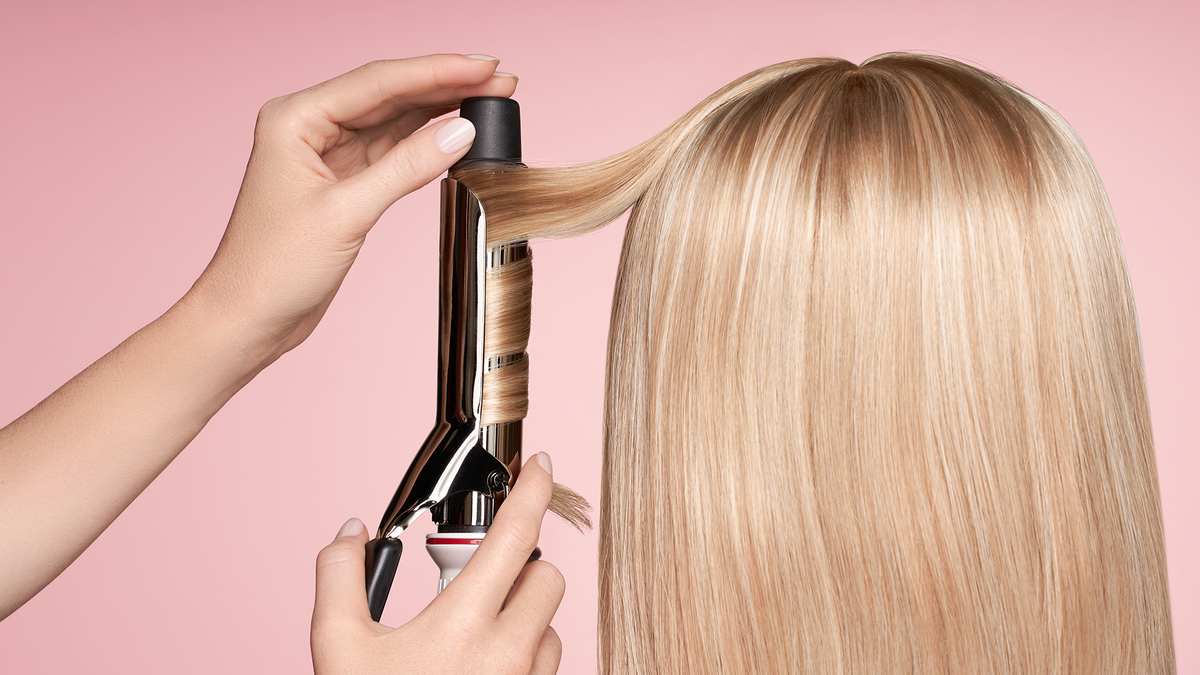
how to use a flat iron for waves Ok, so you’ve decided to purchase a flat iron. You’ve taken it out of its pretty packaging, plugged it in, and turned it on. Now what? You have different choices in how to use a hair straightener depending on the desired look you are going for.
Are you simply wanting to straighten and smooth, or do you want to add a little twist and shine to your hair without having to use both a curling iron and a hair straightener? Below we will walk you through how to curl your hair with a flat iron step by step.
Step 1: Heat Protectant Spray – Optional but Optimal
how to use a flat iron for waves: Although heat protectant spray is optional, its purpose is to help protect against heat damage from hot hair tools. If you are going to be using a hair straightener often, this may be a step you do not want to skip. We recommend using a spray such as John Frieda Frizz Ease Heat Defeat or Chi 44 Iron Guard for styling protection from the inside out.
Make sure hair is dry to begin. Divide hair into small sections and spray the protectant over one section at a time. You do not want to make hair wet, but slightly damp. Comb through and wait a few minutes for the hair to dry. Read the specific label on the product for more detailed instructions.
Step 2: Part Hair Into Sections
Once again you will be parting your hair into sections. Tie your hair up into a bun at the top of your head or pin it up to keep it out of the way, leaving the very bottom section down (approximately 1-inch sections). You will be working in layers from the neck up. The smaller the layers, the curlier it will be.
Step 3: Flat Iron Curling Techniques
Have you ever curled a ribbon on a gift? Curling your hair with a straightener is a similar technique. Taking 1 strand at a time, clamp the flat iron down on the top part of the section and wrap the hair around once. (Careful not to get too close to the scalp and burn yourself!) Holding the end strands of the section with one hand, glide the flat iron down the strand with the other until you reach the bottom of the section. Use this curling technique along the rest of the layer. Then unpin another section of hair down and work your way up until all of the layers are complete and curled.
How to Create Bouncy Curls with a Flat Iron:
Repeat the above curling technique but make bigger layers and larger sections for big bouncy curls. Also, start further away from the scalp and glide the iron down the strands quicker than you would for tighter curls.
Beach Waves with Flat Iron:
Beach waves are a great look, especially if you have long hair to work with. Divide your hair into 4 vertical sections. Take 2 of the sections from 1 side and twist them like a rope separately. Then twist the 2 cords together the same way. Clamp the iron down at the top of the cord (Again, not too close to the scalp!) and work your way down the cord, a few seconds at a time. Allow to cool completely and then unravel the corded hair. Repeat on the other side.
Step 4: Finishing Touches
Once fully cured, simply leave your hair as is or you can run your fingers or a pick through it. If desired you can spray the finished style with a flexible hair spray like Kerastase Laque Dentelle that was seen in the beach waves video. You can also use a wax or pomade like AG Hair Texture Paste to give the hair a smooth, matte look and better keep it in place.
Hair Straightening Tips
- Hair near the hairline is thinner than other areas of the head, so keep in mind that not as much time is needed with the flat iron in that area to get the same result as the thicker areas.
- It may help to spray a section of stubborn hair that does not want to curl with hair spray right before running the flat iron over it.
- Gripping the flat iron on the hair too tightly can cause kinks rather than curls.
- Heat the hair straightener up to the desired temperature ahead of time.
Conclusion
From loose curls to tight curls to flat iron beach waves, there are many different techniques used for curling your hair with a flat iron. Don’t be afraid to play around and discover your technique or what works best for your hair. Remember it’s best to start with dry hair that has been combed through and optional to spray hair to protect from the heat damage that can occur with repeated use of hot tools. It will get easier the more you practice! I hope you enjoyed this tutorial on how to curl your hair with a flat iron.
-

 Skin9 months ago
Skin9 months agoNatural Oil-Free Face Moisturizer Reviews & Buyers Guide
-

 Hair2 weeks ago
Hair2 weeks agoDoes a Flat Iron Kill Lice? Fact or Myth?
-

 Hair9 months ago
Hair9 months agoDoes a Flat Iron Kill Lice? Fact or Myth?
-

 Skin7 months ago
Skin7 months agoAbout Face Beauty: Tips for Enhancing Your Natural Beauty
-

 Hair8 months ago
Hair8 months agoFunction of Beauty: Personalized Hair Care for Your Unique Needs
-

 Skin8 months ago
Skin8 months agoBeautiful Nails: Tips and Tricks for Healthy and Gorgeous Nails
-

 DIY Cosmetics8 months ago
DIY Cosmetics8 months agoEmpire Beauty School:
-
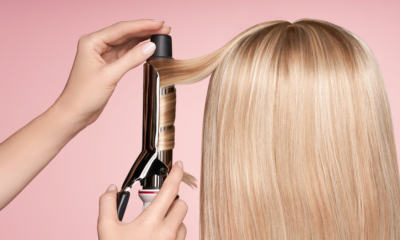
 Hair9 months ago
Hair9 months agoHow to Curl Your Hair with a Flat Iron for Beginners

